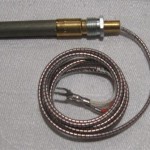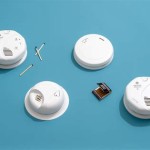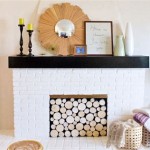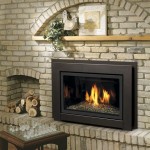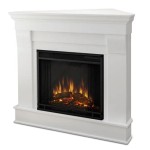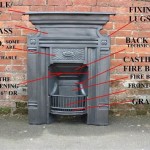Tiling a Fireplace Surround: A Comprehensive Guide
Tiling a fireplace surround is a project that can significantly enhance the aesthetic appeal of a living space. It presents an opportunity to personalize the fireplace, transforming it from a purely functional element into a focal point of the room. This endeavor, while achievable for the average DIY enthusiast, requires careful planning, meticulous execution, and a thorough understanding of the materials and techniques involved. This article will provide a comprehensive guide to tiling a fireplace surround, covering everything from preparation to the final finishing touches.
Before embarking on this project, it is crucial to assess the existing fireplace surround. The surface must be structurally sound and capable of supporting the weight of the tile and adhesive. Common materials for fireplace surrounds include brick, concrete, and cement board. Depending on the existing material, surface preparation techniques will vary. A brick surround may require cleaning and patching to remove loose mortar, while a concrete or cement board surround may need to be primed for better adhesion.
Safety should be a paramount concern throughout the project. Wearing appropriate safety gear, including safety glasses, gloves, and a dust mask, is essential. Proper ventilation is also necessary, particularly when working with adhesives and grout, which can release volatile organic compounds (VOCs). Disconnecting any gas or electrical supply to the fireplace before commencing work is also crucial to prevent accidents.
Planning and Material Selection
The initial step in tiling a fireplace surround involves careful planning and material selection. This phase is crucial for ensuring a successful and aesthetically pleasing outcome. The choice of tile, adhesive, grout, and other materials will significantly influence the final appearance and durability of the tiled surround.
Tile selection is a critical aspect of the planning process. Various tile types are suitable for fireplace surrounds, including ceramic, porcelain, natural stone (such as marble, granite, and slate), and even glass tiles. Each type offers unique aesthetic qualities and performance characteristics. Ceramic and porcelain tiles are generally cost-effective, durable, and easy to maintain. Natural stone tiles provide a more luxurious and unique appearance but may require more specialized care and maintenance. Glass tiles offer a contemporary look and are resistant to staining. The choice of tile should align with the overall design aesthetic of the room and the budget allocated for the project.
Once the tile type is selected, consider the size, shape, and color of the tiles. Larger tiles can create a more modern and seamless look, while smaller tiles allow for intricate patterns and designs. The color of the tiles should complement the existing décor of the room. Lighter colors can brighten the space, while darker colors can add a touch of drama and sophistication.
Equally important is the selection of the appropriate adhesive, also known as thin-set mortar. The type of adhesive used should be specifically formulated for the type of tile being installed and the substrate to which it is being adhered. For example, natural stone tiles often require a modified thin-set mortar to prevent staining and discoloration. Cement board substrates may require a different type of adhesive compared to brick or concrete. Carefully read the manufacturer's instructions for the chosen adhesive to ensure proper application and bonding.
Grout is another essential material to consider. Grout fills the spaces between the tiles, providing a finished look and preventing water from seeping behind the tiles. Grout comes in a variety of colors, allowing for customization and coordination with the tile color. Epoxy grout is a more durable and stain-resistant option, particularly suitable for areas prone to moisture or staining. However, epoxy grout can be more challenging to work with and may require professional installation.
Accurate measurement of the fireplace surround is essential for determining the quantity of materials needed. Measure the height and width of the area to be tiled and calculate the total square footage. Add a contingency factor of approximately 10% to account for cuts, breakage, and waste. This will ensure that there is sufficient material to complete the project without running short.
Finally, gather the necessary tools and equipment. These include a tile saw (either wet or dry), a notched trowel, a grout float, a sponge, a level, a measuring tape, a pencil, safety glasses, gloves, and a dust mask. Having all the necessary tools readily available will streamline the tiling process and minimize delays.
Surface Preparation and Tile Installation
Proper surface preparation is fundamental to ensuring a long-lasting and aesthetically pleasing tile installation. The substrate must be clean, dry, and structurally sound. Any loose or damaged material must be removed, and the surface should be leveled or repaired as necessary.
For brick surrounds, remove any loose mortar or debris using a chisel and hammer. Fill any cracks or holes with patching compound and allow it to dry completely. Clean the brick surface thoroughly with a wire brush and a suitable cleaning solution to remove any dirt, grease, or efflorescence. Applying a primer specifically designed for masonry surfaces can improve adhesion and prevent moisture migration.
For concrete or cement board surrounds, ensure that the surface is free of any loose particles or contaminants. Scrape away any paint or adhesive residue. If the surface is uneven, apply a self-leveling compound to create a smooth and uniform base. Priming the surface with a bonding agent is recommended to enhance adhesion and prevent the adhesive from drying out too quickly.
Once the surface is properly prepared, the tile installation can begin. Start by dry-laying the tiles to determine the desired layout and pattern. This allows for adjustments and ensures a balanced and visually appealing arrangement. Use tile spacers to maintain consistent grout lines between the tiles.
Mix the thin-set mortar according to the manufacturer's instructions. Use a notched trowel to apply the adhesive to the substrate, spreading it evenly and creating ridges that will provide a better bond with the tiles. The size of the notched trowel should be appropriate for the size of the tiles being installed. Press the tiles firmly into the adhesive, using a slight twisting motion to ensure proper adhesion. Use a level to check that the tiles are aligned and flush. Remove any excess adhesive from the tile surface with a damp sponge.
Continue installing the tiles, working in small sections and ensuring that the grout lines are consistent. Use tile spacers to maintain the desired spacing between the tiles. As the tiles are installed, periodically check the alignment and levelness to make any necessary adjustments. Allow the adhesive to dry completely according to the manufacturer's instructions before proceeding to the next step.
Cutting tiles to fit around the fireplace opening or any other obstructions may be required. A wet tile saw is the preferred tool for cutting tiles, as it provides clean, accurate cuts and minimizes dust. When cutting tiles, wear safety glasses to protect the eyes from flying debris. For small cuts or intricate shapes, a manual tile cutter or a tile nipper can be used.
Grouting and Finishing
After the adhesive has completely dried, the grout can be applied. Remove the tile spacers and clean the grout lines with a grout removal tool or a utility knife. Mix the grout according to the manufacturer's instructions. Use a grout float to apply the grout to the tile surface, pressing it firmly into the grout lines. Work diagonally across the tiles to ensure that the grout lines are completely filled.
Remove excess grout from the tile surface with a damp sponge. Rinse the sponge frequently to prevent it from becoming saturated with grout. Use a circular motion to wipe away the excess grout, being careful not to remove grout from the grout lines. Allow the grout to dry slightly before polishing the tile surface with a clean, dry cloth.
After the grout has completely cured, apply a grout sealer to protect it from staining and moisture. The grout sealer will penetrate the grout pores, creating a barrier that prevents liquids and stains from being absorbed. Apply the grout sealer according to the manufacturer's instructions. Allow it to dry completely before using the fireplace.
Inspect the tiled surround for any imperfections or areas that need touch-up. Repair any cracks or chips with a tile repair kit or a color-matched epoxy. Clean the tile surface with a tile cleaner to remove any residue or stains. Apply a tile polish to enhance the shine and luster of the tiles.
Finally, re-install any fireplace accessories, such as mantels or surrounds. Ensure that all connections are secure and that the fireplace is functioning properly. The newly tiled fireplace surround will enhance the aesthetic appeal of the living space and provide years of enjoyment.

How To Tile A Fireplace Surround And Hearth Build Basic

Diy Tiling A Fireplace Surround What We Learned Along The Way

Fireplace Tiles Classique Floors Tile Portland Or

How To Tile Over A Brick Hearth Shine Your Light

Diy Tiling A Fireplace Surround What We Learned Along The Way

Remodeling A Fireplace With Tile

14 Fresh Designs For Tiled Fireplaces Bob Vila
Fireplace Tile Surround 5 Decorative Mantel Tiles 2024

How To Install A Marble Herringbone Fireplace Surround And Hearth

Fireplace Tiles Classique Floors Tile Portland Or
Related Posts

